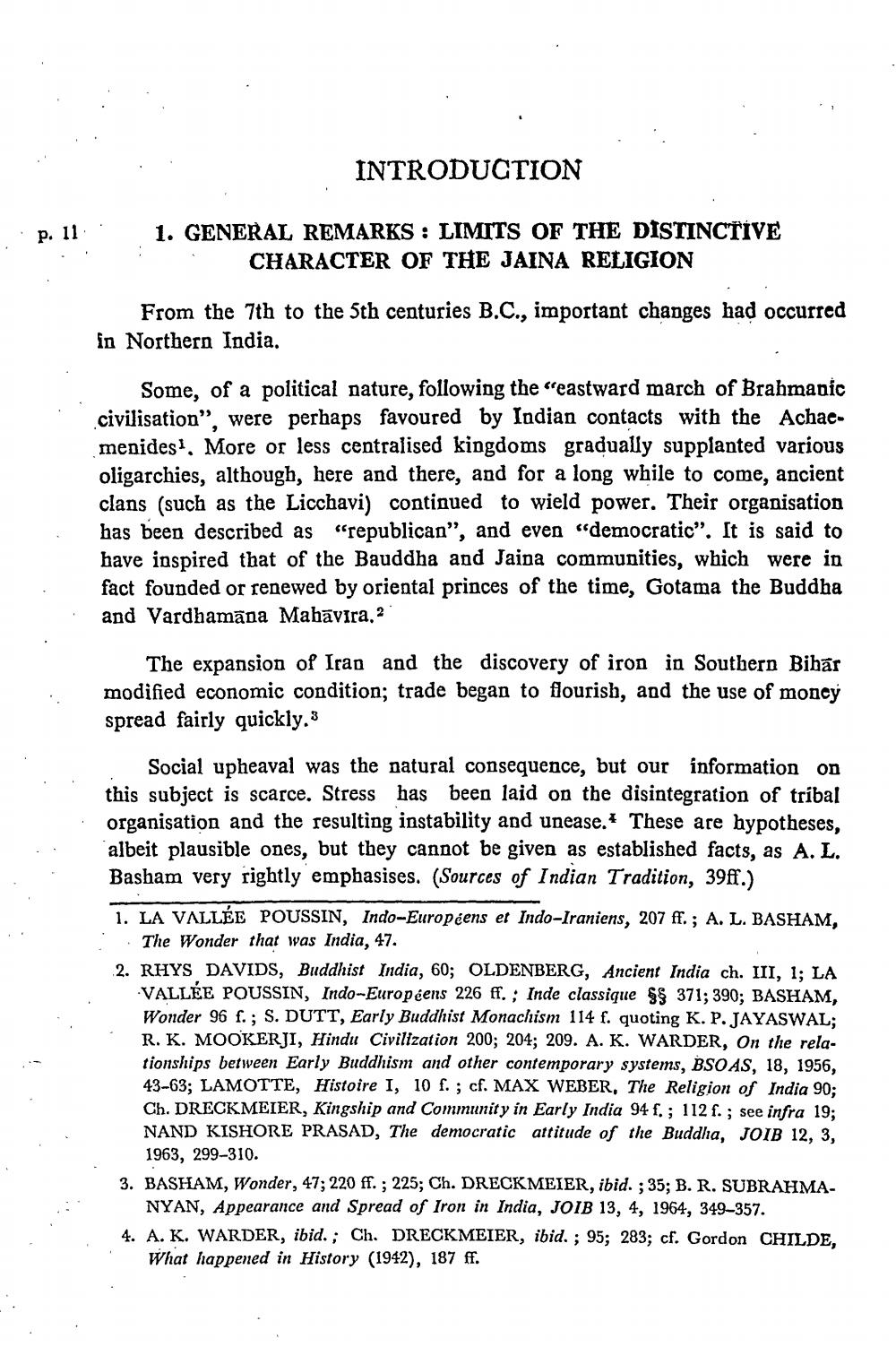________________
INTRODUCTION
p. 11.
1. GENERAL REMARKS : LIMITS OF THE DISTINCTIVE
CHARACTER OF THE JAINA RELIGION
From the 7th to the 5th centuries B.C., important changes had occurred in Northern India.
Some, of a political nature, following the “eastward march of Brahmanic civilisation”, were perhaps favoured by Indian contacts with the Achaemenides'. More or less centralised kingdoms gradually supplanted various oligarchies, although, here and there, and for a long while to come, ancient clans (such as the Licchavi) continued to wield power. Their organisation has been described as "republican", and even "democratic". It is said to have inspired that of the Bauddha and Jaina communities, which were in fact founded or renewed by oriental princes of the time, Gotama the Buddha and Vardhamana Mahavira.
The expansion of Iran and the discovery of iron in Southern Bihar modified economic condition; trade began to flourish, and the use of money spread fairly quickly.3
Social upheaval was the natural consequence, but our information on this subject is scarce. Stress has been laid on the disintegration of tribal organisation and the resulting instability and unease. These are hypotheses, albeit plausible ones, but they cannot be given as established facts, as A. L. Basham very rightly emphasises. (Sources of Indian Tradition, 39ff.)
1. LA VALLÉE POUSSIN, Indo-Européens et Indo-Iraniens, 207 ff.; A. L. BASHAM,
The Wonder that was India, 47. 2. RHYS DAVIDS, Buddhist India, 60; OLDENBERG, Ancient India ch. III, 1; LA
VALLÉE POUSSIN, Indo-Européens 226 ff. ; Inde classique &$ 371; 390; BASHAM, Wonder 96 f.; S. DUTT, Early Buddhist Monachism 114 f. quoting K. P. JAYASWAL; R. K. MOOKERJI, Hindu Civilization 200; 204; 209. A. K. WARDER, On the relationships between Early Buddhism and other contemporary systems, BSOAS, 18, 1956, 43-63; LAMOTTE, Histoire I, 10 f.; cf. MAX WEBER, The Religion of India 90; Ch. DRECKMEIER, Kingship and Community in Early India 94 f. ; 112 f. ; see infra 19; NAND KISHORE PRASAD, The democratic attitude of the Buddha, JOIB 12, 3, 1963, 299-310.
M, Wonder, 47; 220 ff. ; 225; Ch. DRECKMEIER, ibid. ; 35; B. R. SUBRAHMA NYAN, Appearance and Spread of Iron in India, JOIB 13, 4, 1964, 349–357. 4. A. K. WARDER, ibid. ; Ch. DRECKMEIER, ibid. ; 95; 283; cf. Gordon CHILDE,
What happened in History (1942), 187 ff.




